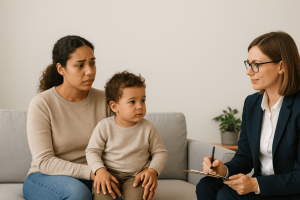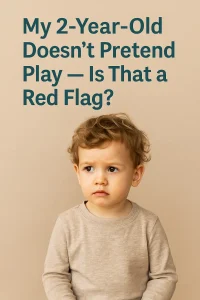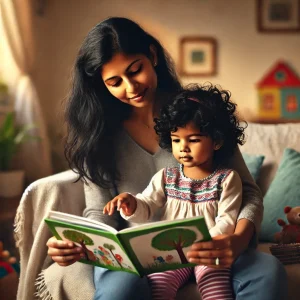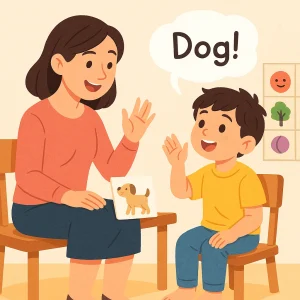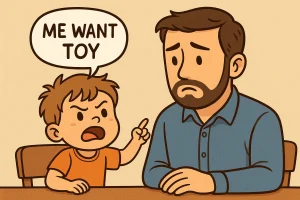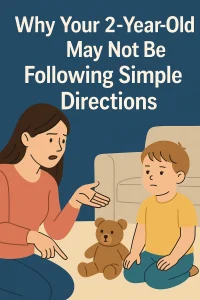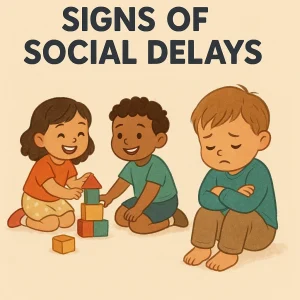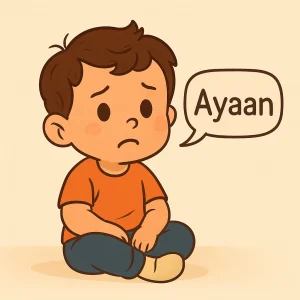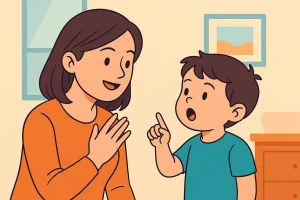Toddler Avoiding Eye Contact? What Parents Should Know
By Rajini D
Last Updated: July 14, 2025
If you’ve noticed that your toddler avoids eye contact, you might feel a mix of concern, confusion, and worry. First, take a deep breath — you’re not alone. Many parents notice small things that don’t seem quite right and wonder if they should be concerned.
Eye contact is a key part of how young children connect, communicate, and learn. While every child develops at their own pace, paying attention to early signs like limited eye contact is a loving and important step.
Learn more about early signs, diagnosis, and support options on our comprehensive Autism Spectrum Disorder resource page — and take the first step toward expert guidance
Why Eye Contact is Important
When your little one locks eyes with you — even just for a moment — something magical happens. That tiny connection builds the foundation for so many parts of your child’s development, from bonding and learning to communicating feelings without even saying a word.
Eye Contact: The First Building Block of Social and Emotional Development
From the very beginning, babies naturally seek out faces. Eye contact is one of the first ways they begin to understand the world around them. It helps your child:
- Recognize and bond with caregivers
- Learn to read emotions (like knowing when you’re happy, surprised, or worried)
- Feel safe and connected in new environments
How Toddlers Use Eye Contact to Connect, Learn Language, and Express Emotions
Eye contact isn’t just about looking — it’s a key part of how toddlers interact and grow.
Here’s what it helps your toddler do:
| Skill | How Eye Contact Supports It |
|---|---|
| Connecting socially | Helps babies and toddlers feel bonded to loved ones |
| Learning language | Lets children see mouth movements and facial expressions while hearing words |
| Expressing emotions | Shares feelings like excitement, happiness, or confusion |
| Understanding others | Helps them “read” nonverbal clues like smiles or frowns |
Building Trust and Relationships Through Eye Contact
Strong relationships are built on small moments — and eye contact is often where those moments start.
- When your toddler makes eye contact and sees you smiling back, they learn the world is a safe, welcoming place.
- When you mirror their expressions or react warmly, it teaches them that their feelings matter.
- Over time, these repeated interactions create a deep sense of security and trust — the emotional bedrock that supports learning, confidence, and social skills.
Worried about signs of autism? Start with our free online autism screening test and take the first step toward early support.
What’s Typically Expected at Different Ages
When you’re watching your little one grow, it’s natural to wonder: “Is this normal for their age?”
Let’s walk through what eye contact development usually looks like in the first two years — so you can feel more confident about what to expect.
0–6 Months: Early Glimpses of Connection
In these early months, eye contact is just beginning to form.
You might notice:
- Your baby briefly locking eyes during feeding or cuddling
- Moments where they stare at your face, especially when you’re close
- Flickering eye contact that feels more accidental than purposeful
At this stage, babies are still adjusting to the bright, busy world around them. Eye contact may be fleeting — but every little glance is a powerful building block for connection.
6–12 Months: Growing Awareness
By the time your baby reaches around 6 months, eye contact often becomes more intentional.
You might see:
- Your baby looking directly at you during playtime or feeding
- Smiling in response to your smiles
- Following your gaze when you look at an object or another person
This back-and-forth “shared attention” is an exciting sign that your baby is beginning to engage socially and emotionally.
12–18 Months: Communication Through the Eyes
Between 12 and 18 months, eye contact starts playing a bigger role in how toddlers communicate.
Common signs include:
- Purposefully looking at you to get your attention
- Making eye contact before or after saying a word or sound
- Checking your reaction during play (especially when doing something new or funny)
At this stage, toddlers are using eye contact not just to connect — but to communicate.
18–24 Months: Sharing Interests and Experiences
Around 18 to 24 months, toddlers use eye contact more naturally to share their world with you.
You might notice:
- Your toddler pointing at something exciting and then looking back at you
- Glancing at you to share a discovery, like a favorite toy or a silly noise
- Using eye contact during pretend play or when asking for help
This “joint attention” — when they involve you in what they’re noticing — is a major milestone for social communication.
Every Child Moves at Their Own Pace
It’s important to remember:
Development isn’t a race.
Some toddlers may be a little quicker or slower than others, and that’s okay.
Small differences in when and how eye contact appears are normal. What matters most is seeing progress over time and how your child uses eye contact alongside other skills like smiling, babbling, pointing, and playing.
When to Be Concerned
Every child grows at their own pace — and small differences are completely normal.
But sometimes, certain patterns might signal that your toddler could use a little extra support.
Let’s look at some signs that may deserve a closer look.
Rarely or Never Makes Eye Contact
If your toddler rarely looks at you — even during happy moments like cuddles, playtime, or feeding — it’s something to take note of.
Eye contact helps build the social and emotional bridges that toddlers need to thrive.
Even shy or quiet children usually show moments of eye connection with trusted adults. If it’s missing most of the time, it’s worth mentioning to your pediatrician or a speech therapist.
Doesn’t Respond to Their Name by 12 Months
By their first birthday, most babies will at least turn their head or look toward you when they hear their name.
If your child doesn’t respond after several attempts — even in a quiet, distraction-free setting — it could be a sign to check in further.
Tip: Try calling your child from different distances and tones before worrying. Some toddlers are deeply focused on play!
Shows Little Interest in People
Babies and toddlers are naturally curious about faces, voices, and interactions.
If your child seems more interested in objects than in people most of the time — or doesn’t seek out attention from you or others — this may point to a social communication delay.
Signs could include:
- Preferring to play alone most of the time
- Not reacting when a parent enters or leaves the room
- Lack of smiles, babbling, or laughter during interactions
Avoids Looking at Parents During Play or Routines
During activities like reading, stacking blocks, or mealtime, toddlers often glance at parents to share the experience or check for reactions.
If your child consistently avoids looking at you during these moments, it might suggest difficulty with social engagement.
This doesn’t mean they don’t enjoy the activity — it could be a subtle signal that they’re struggling to connect visually.
Lack of Pointing, Gesturing, or Shared Attention
Around 12–18 months, most toddlers naturally begin to:
- Point to things they want
- Wave goodbye
- Show you toys they find exciting
If your child isn’t using gestures to share interests or ask for things, it’s important to observe further.
Pointing and eye contact together form the foundation of early communication — even before words fully develop.
Remember: Patterns Matter, Not Isolated Moments
It’s important not to panic over a single missed milestone.
What matters most is the overall pattern of your child’s behaviors over time.
For example:
| Less Worrying | Needs a Closer Look |
|---|---|
| Occasionally distracted or shy | Rarely ever looks at faces |
| Sometimes ignores their name | Consistently doesn’t respond to name |
| Likes alone time but also seeks you out | Shows little interest in any people |
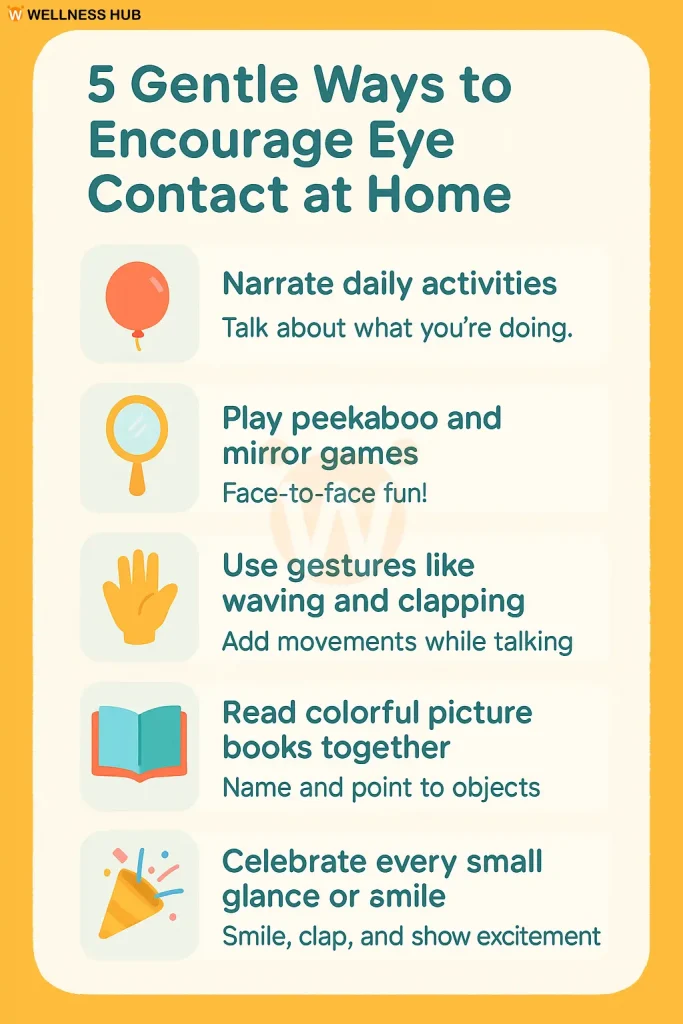
How Parents Can Help at Home
The good news?
There are so many simple, everyday ways you can gently encourage better eye contact and communication right at home. No fancy toys or special programs needed — just you, your time, and a little playfulness.
Here are some easy activities that can make a big difference:
Narrate Your Activities
One of the easiest ways to boost connection is to talk about what you’re doing while you do it.
For example:
- “I’m washing your bottle — look, splash splash!”
- “I’m cutting an apple — slice, slice, slice!”
Make sure to position yourself at your child’s eye level when possible. Eye contact naturally happens when your child hears your voice and sees your face animated and expressive.
Tip: Think of yourself as a “tour guide” narrating the little moments of your day.
Play Face-to-Face Game
Face-to-face games are powerful for building social skills and encouraging eye contact — and they’re fun too!
Some favorites:
- Peekaboo: Hiding your face and popping back out teaches your child to look for you.
- Mirror play: Make silly faces together and copy each other’s expressions.
- Pat-a-cake or clapping games: These naturally draw your child’s gaze to your hands and face.
Simple games that invite a shared laugh or surprise moment create natural opportunities for joyful eye contact.
Use Expressive Gestures
Children learn so much by seeing as well as hearing.
Adding gestures while you talk helps toddlers link actions with words — and it draws their attention to you.
Try:
- Waving hello and goodbye
- Clapping when something exciting happens
- Pointing to toys, pictures, or objects you’re talking about
Over time, these small gestures help your toddler understand communication is more than words — it’s looks, movements, and shared moments.
Read More: Unlock Expressive Language in ASD Kids: 8 Proven Strategies
Read Interactive Books
Storytime is a golden opportunity for connection.
Choose simple, colorful books and read actively:
- Point to the pictures
- Name objects (“Look! A dog!”)
- Pause after a page and wait to see if your child looks at you, makes a sound, or points
Even if your child isn’t speaking much yet, they are learning that communication is about sharing attention — you and them, together.
Celebrate Small Interactions
Every glance, smile, or sound your toddler makes toward you is worth celebrating.
Respond warmly — clap, smile, say “Yay!” or mirror their excitement.
Positive reactions encourage your child to keep reaching out and trying again.
Over time, these tiny moments of success build bigger bridges of communication and trust.
| Small Action | Big Impact |
|---|---|
| Smiling back | Builds emotional security |
| Clapping for an attempt | Boosts confidence |
| Repeating a baby sound | Encourages imitation |
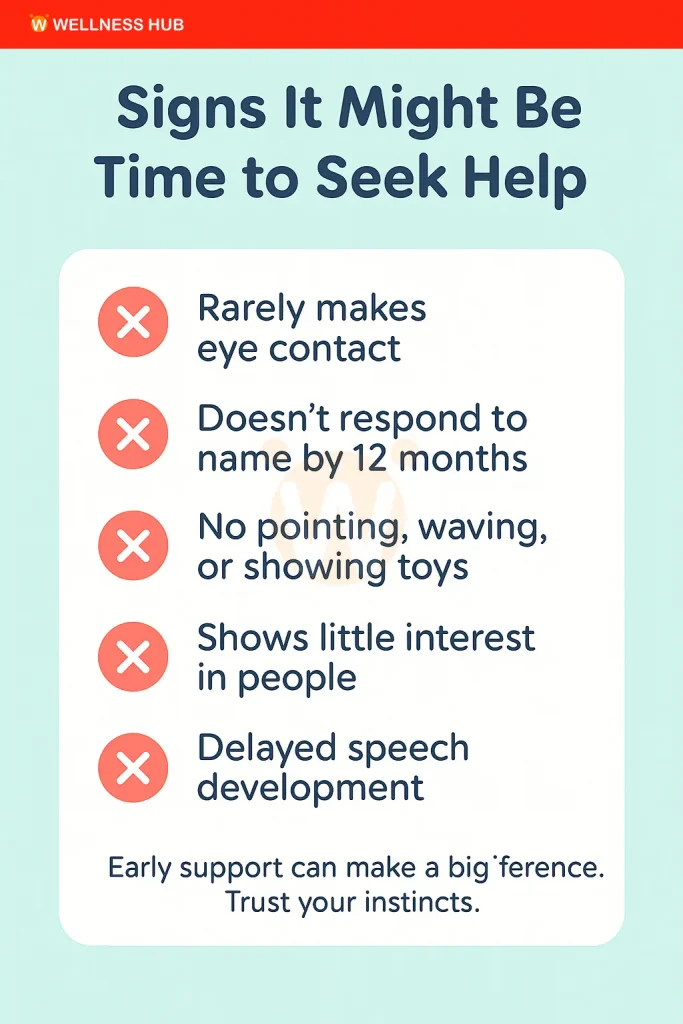
When Expert Support May Be Needed
You know your child best.
If you’ve been encouraging connection at home but still feel concerned — especially if limited eye contact is paired with delayed speech or social skills — it might be time to reach out for expert support.
And that’s a positive step. Early help can make a world of difference.
When to Consider a Closer Look
It’s a good idea to talk to a professional if you notice:
- Ongoing poor eye contact even after trying interactive games and activities
- No response to their name by around 12 months
- Little or no use of gestures like waving or pointing by 15–18 months
- Limited interest in sharing attention (like showing you toys or looking back at you)
- Speech delays, such as not speaking single words by 16 months
The earlier you act, the easier it can be to support your child’s communication growth.
Why Early Screening Matters
Getting an early screening from a speech therapist or developmental specialist helps answer big questions like:
- Is this just a late bloomer or a real delay?
- What skills does my child already have?
- What small supports could help my child thrive?
Screenings are gentle, play-based, and focused on understanding your child — not labeling them.
It’s about finding the right ways to support where they are now.
How Online Speech Therapy Can Help
Thanks to technology, you don’t have to wait months for support or drive long distances for help.
Online speech therapy offers:
| Service | What It Means for You |
|---|---|
| Personalized assessments | Tailored checkups to understand your child’s strengths and needs |
| Fun, interactive sessions | Play-based learning that keeps toddlers engaged and happy |
| Parent coaching and home tips | Strategies you can use daily to boost communication and connection |
Gentle Encouragement for Parents
If you’re here reading this, it’s because you care deeply about your child — and that already makes you an incredible parent.
It’s important to remember: every child’s journey is unique. Some little ones connect easily through eye contact and gestures early on. Others might take a little more time, or need a bit more support to get there. And that’s okay.
Trusting Your Instincts Is Powerful
No one knows your child better than you do. If something in your gut is telling you, “I feel like something’s different,” it’s worth paying attention to. Your instincts are a powerful guide — and seeking information, support, or help is one of the most loving things you can do for your little one.
Seeking Support is a Strength, Not a Failure
Reaching out for help is not a sign that something is wrong with your child — it’s a sign that you’re committed to giving them the very best start.
Early support is like giving your child an extra boost just when they need it most.
Research shows that early intervention can open up new pathways for speech, learning, and social development — often making future challenges much easier to manage or even avoid altogether.
Early Help Opens Many Doors
Whether it’s a few playful therapy sessions, simple at-home strategies, or just guidance on what to watch for — early action creates more options.
It builds a stronger foundation for:
- Speech and language skills
- Emotional connection
- Confidence in social settings
Even small steps taken early can have a lifelong impact.
Conclusion
If your toddler avoids eye contact, it’s okay to feel concerned. Every child grows in their own way, and noticing small signs shows how much you care. Trust your instincts — early support can make a big difference. Whether your child just needs more time or a little expert help, you don’t have to figure it out alone. At Wellness Hub, we’re here to guide you with expert advice and caring support. Learn more about early speech development or book your free consultation today — your child’s bright future starts here!
Frequently Asked Questions:
1. Is it normal if my toddler avoids eye contact sometimes?
Yes, sometimes toddlers avoid eye contact when they are tired, shy, or busy exploring. But if it happens most of the time, it’s good to watch closely.
2. At what age should a baby start making eye contact?
Most babies start making brief eye contact by 6 to 8 weeks old. Stronger, more consistent eye contact usually develops by 6 to 12 months.
3. What does poor eye contact in toddlers mean?
Poor eye contact could be a sign of speech delay, social communication difficulties, or sometimes autism. It’s important to look at other signs too and talk to a professional if needed.
4. Should I worry if my 1-year-old doesn’t respond to their name?
By 12 months, most babies turn their head or look when their name is called. If your child doesn’t respond, it’s a good idea to discuss it with a doctor or speech therapist.
5. Can speech delay and poor eye contact be related?
Yes, often they are connected. Eye contact is part of how toddlers learn to communicate, so delays in one area can sometimes affect the other.
6. How can I help my toddler make better eye contact at home?
Simple activities like playing peekaboo, reading picture books, and using gestures while talking can help build eye contact in a fun way.
7. When should I see a speech therapist for my toddler?
If your toddler rarely makes eye contact, doesn’t use gestures like pointing, or has few words by 16–18 months, it’s a good time to get a speech screening.
8. How does online speech therapy work for young children?
Online speech therapy uses video calls where therapists guide fun activities, games, and parent coaching to help your child learn in a familiar, comfortable setting.
9. Can early speech therapy really help toddlers?
Yes! Early speech therapy can help improve eye contact, language skills, and social confidence — making a big difference in your child’s future learning and communication.
10. Where can I get a free consultation for toddler speech concerns?
You can book a free consultation with Wellness Hub to talk to an expert and learn how to support your child’s speech and social development.
About the Author:
Rajini Darugupally
M.Sc., Speech-Language Pathologist (9+ years of experience)
Rajini is a passionate and dedicated Speech-Language Pathologist with over 9+ years of experience, specializing in both developmental speech and language disorders in children and rehabilitation in adults. Driven by a desire to empower each individual to find their voice, Rajini brings a wealth of experience and a warm, genuine approach to therapy. Currently, at Wellness Hub, she thrives in a team environment that values innovation, compassion, and achieving results for their clients.
Book your Free Consultation Today
Parent/Caregiver Info:
Client’s Details:
* Error Message
